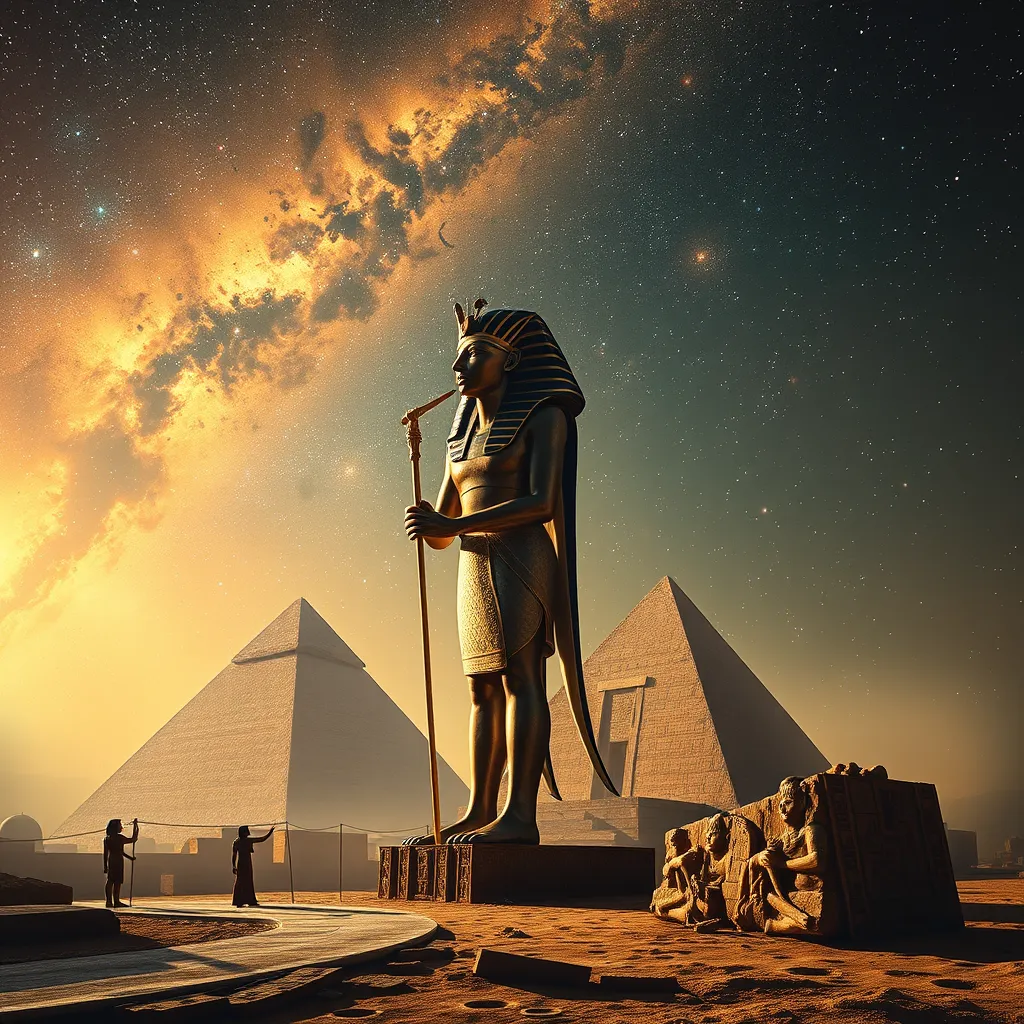How Did the Ancient Egyptians View the Universe and Their Place within It?
I. Introduction
Ancient Egyptian civilization, one of the most remarkable and enduring cultures in history, flourished along the banks of the Nile River for thousands of years. Known for their monumental architecture, rich mythology, and complex social structures, the Egyptians developed a worldview deeply intertwined with their understanding of the cosmos. Central to their culture was cosmology, which shaped their beliefs, practices, and interactions with the divine.
This article aims to explore how the Ancient Egyptians viewed the universe and their place within it, shedding light on their cosmic beliefs, the structure of their universe, and the significance of their deities and philosophical concepts.
II. The Structure of the Ancient Egyptian Universe
The Ancient Egyptians envisioned the cosmos as a complex system governed by divine principles. Their mythology presented a structured universe composed of three primary realms:
- The Sky (Nut): The goddess Nut represented the sky, often depicted as a woman arching over the earth, adorned with stars.
- The Earth (Geb): Geb, the god of the earth, was seen as a fertile land, and he was often portrayed lying beneath Nut.
- The Underworld (Duat): Duat was the realm of the dead, where souls journeyed after death, facing trials and judgment.
In this cosmological framework, celestial bodies played crucial roles. The sun, considered the most important, was personified by the god Ra, who traversed the sky during the day and journeyed through the Underworld at night.
III. Deities and Their Cosmic Roles
The Ancient Egyptians worshipped a pantheon of gods, each with unique attributes and cosmic responsibilities. Some of the most significant deities associated with creation and the universe include:
- Ra: The sun god and a central figure in Egyptian mythology, Ra was believed to be the creator of all life, traveling across the sky in his solar boat.
- Osiris: As the god of the afterlife, Osiris presided over the realm of the dead, symbolizing resurrection and eternal life.
- Isis: The goddess of magic and motherhood, Isis was revered for her protective qualities and her role in the resurrection of Osiris.
In addition to these deities, the concept of Maat, which embodies truth, balance, and order, was essential in maintaining the cosmic and social order.
IV. The Concept of Maat and Cosmic Order
Maat represented more than just a goddess; it was a fundamental principle that permeated every aspect of Ancient Egyptian life. It symbolized harmony, justice, and the natural order of the universe.
The Ancient Egyptians believed that Maat was essential for the universe’s stability and that it governed the relationships between the gods and humanity. The implications of Maat extended to:
- Human Behavior: Egyptians were expected to live according to Maat, promoting truth and justice in their daily lives.
- Governance: Rulers were seen as the earthly embodiment of Maat, tasked with maintaining order and harmony in society.
V. The Afterlife and Its Connection to the Universe
The Ancient Egyptians held profound beliefs regarding the afterlife, viewing it as a continuation of life on earth. The journey of the soul was a central theme in their cosmology, with various rites and practices designed to aid the deceased in their transition to the afterlife.
Key aspects of their beliefs included:
- Burial Practices: Elaborate tombs and burial rituals were conducted to ensure a safe passage for the soul, reflecting their belief in the importance of the afterlife.
- Tomb Architecture: Structures such as pyramids and elaborate tomb paintings depicted scenes of the afterlife, providing guidance and sustenance for the deceased.
- Weighing of the Heart: This crucial judgment process determined the soul’s fate, where the heart was weighed against the feather of Maat, symbolizing truth and justice.
VI. Astronomy and Its Influence on Daily Life
Astronomy played a vital role in Ancient Egyptian society, influencing agriculture, religious practices, and the calendar. The Egyptians were keen observers of celestial events and incorporated these observations into their daily lives.
Some significant influences of astronomy included:
- Agriculture: The Nile’s annual flooding was predicted by the heliacal rising of Sirius, which signaled the planting and harvesting seasons.
- Calendar Formation: The Egyptians developed a calendar based on lunar and solar cycles, integrating it into their agricultural and religious practices.
- Architectural Alignments: Many temples and monuments were aligned with celestial bodies, reflecting their belief in the divine connection between the earth and the cosmos.
VII. Art and Symbolism Reflecting Cosmic Beliefs
Ancient Egyptian art is rich with depictions of the cosmos and the divine. Artists utilized symbols and imagery to convey their understanding of the universe and the gods.
Key elements of art and symbolism included:
- Cosmic Depictions: Artistic representations of the sky goddess Nut and other celestial themes are prominent in tomb paintings and temple reliefs.
- Symbolic Representations: Gods were often depicted with specific attributes, such as the ankh symbolizing life or the scarab representing rebirth.
- Influence on Architecture: Structures like temples were designed to reflect cosmic order, with intricate hieroglyphs detailing celestial narratives.
VIII. Conclusion
The Ancient Egyptians possessed a complex and intricate understanding of the universe, viewing themselves as integral participants in a divine cosmic order. Their beliefs in the structure of the universe, the roles of deities, the significance of Maat, and the afterlife provide valuable insights into their worldview.
These ancient beliefs have left a lasting impact on subsequent cultures and civilizations, influencing religious and philosophical thought throughout history. By studying and understanding the ancient Egyptian worldview, we gain a deeper appreciation for the ways in which humanity has grappled with existential questions and the nature of existence itself.
In contemporary society, reflecting on these ancient perspectives encourages us to consider our own place in the cosmos and the values we hold dear.




